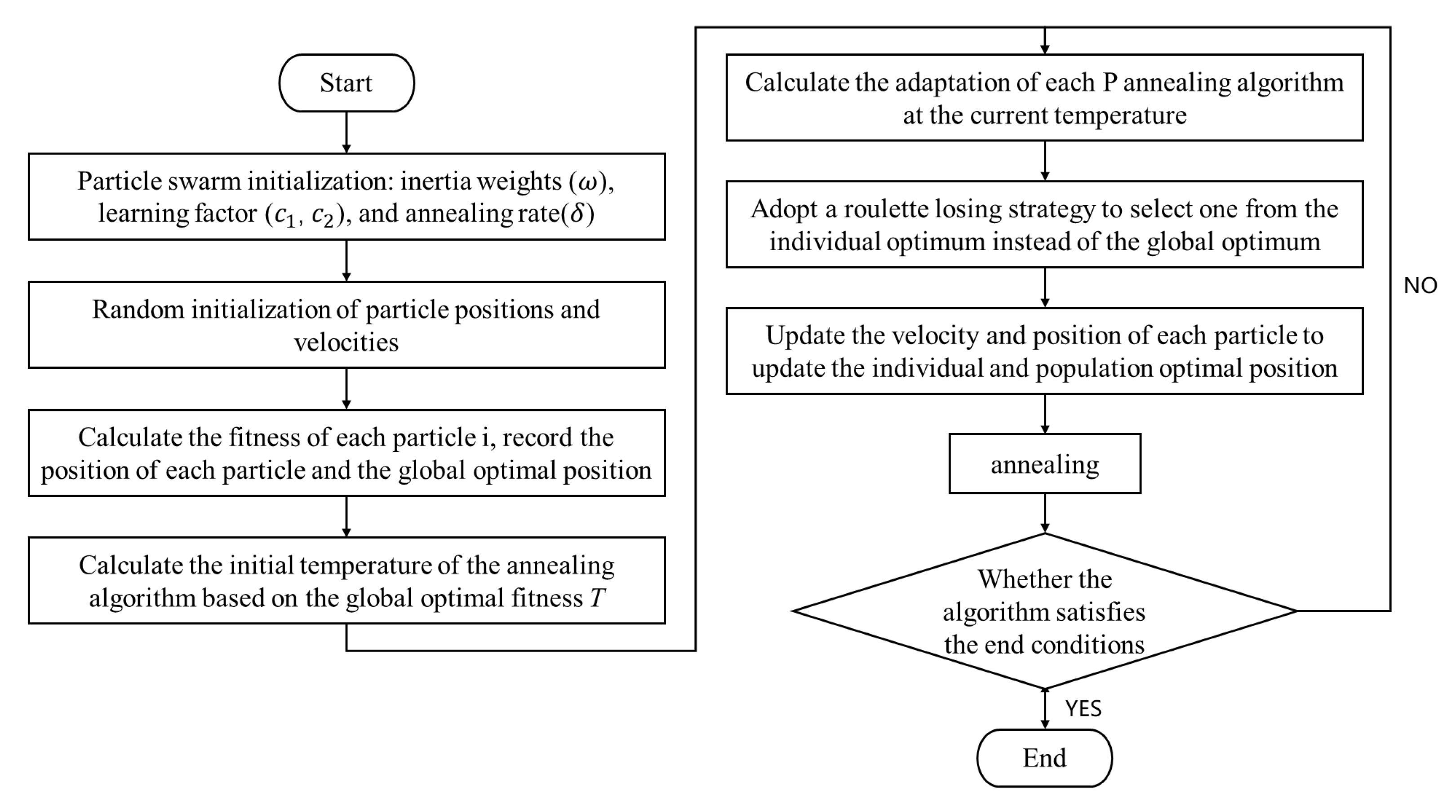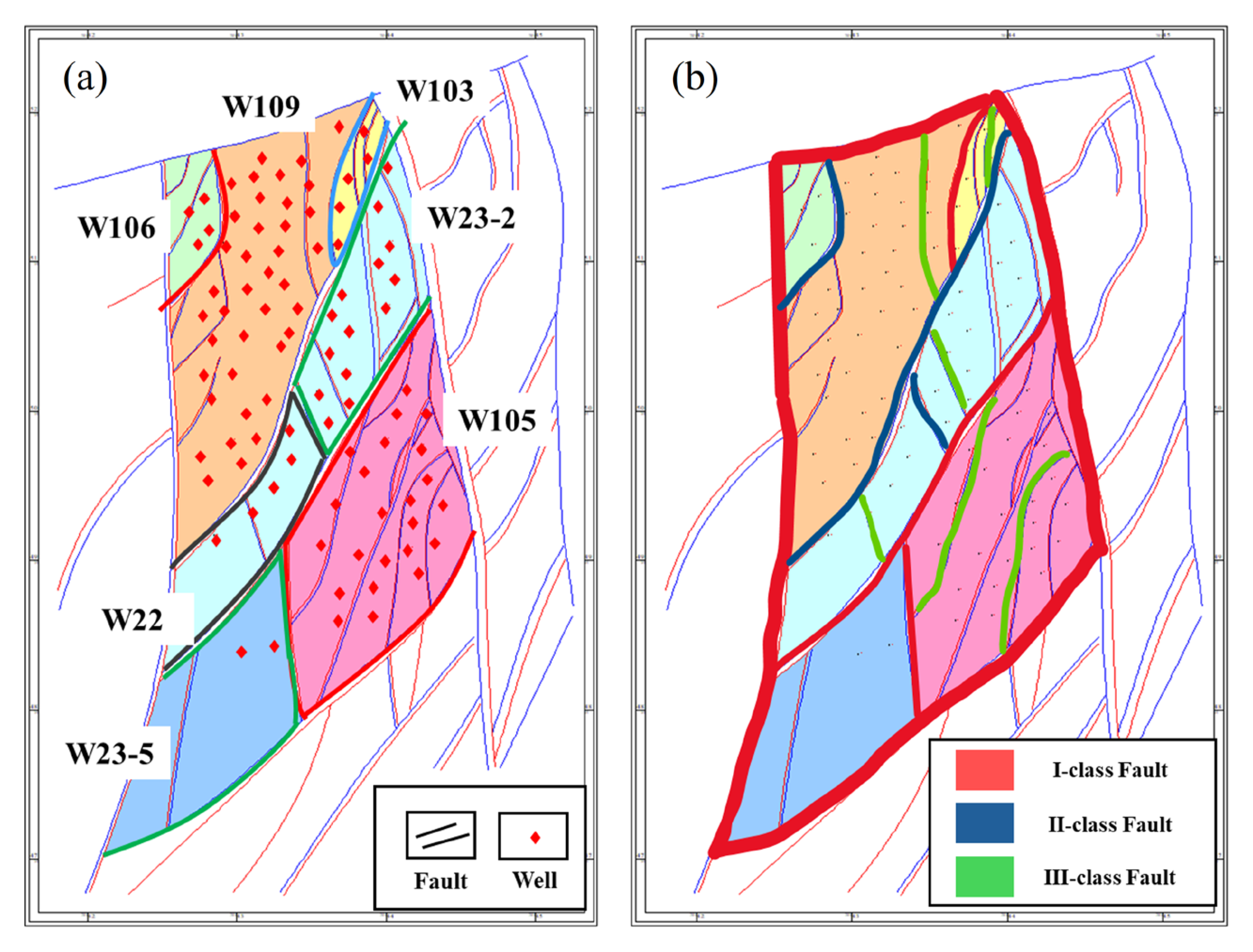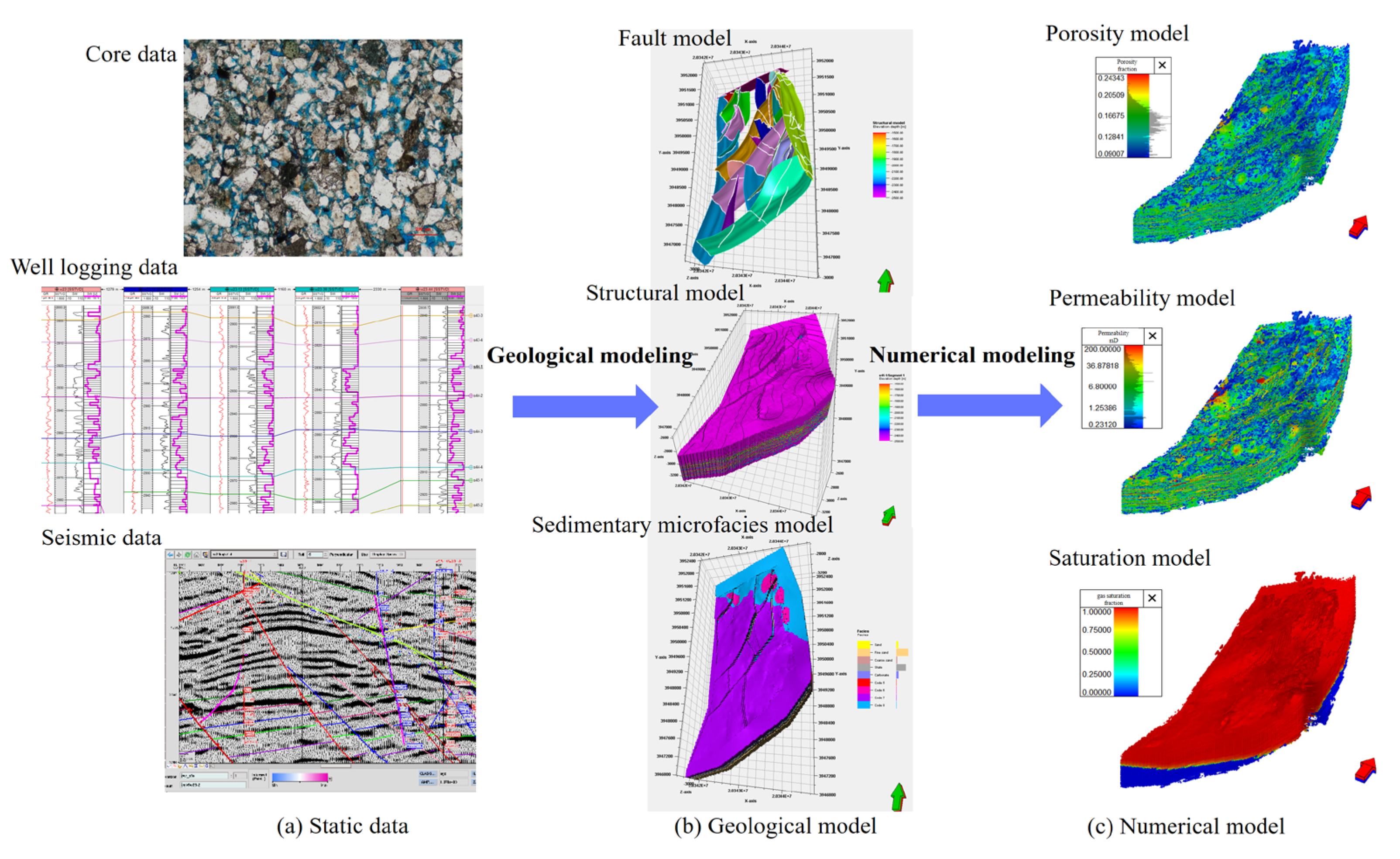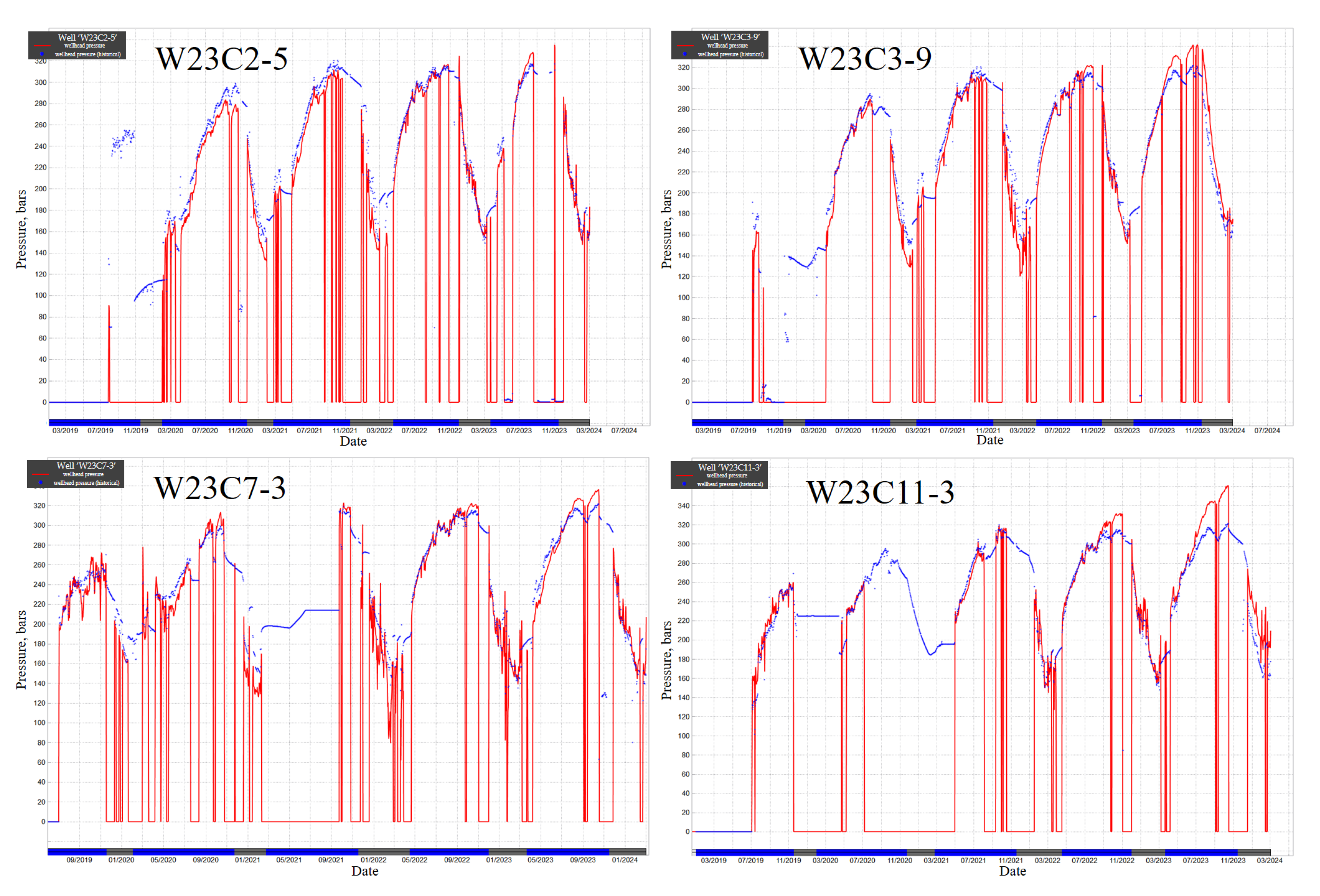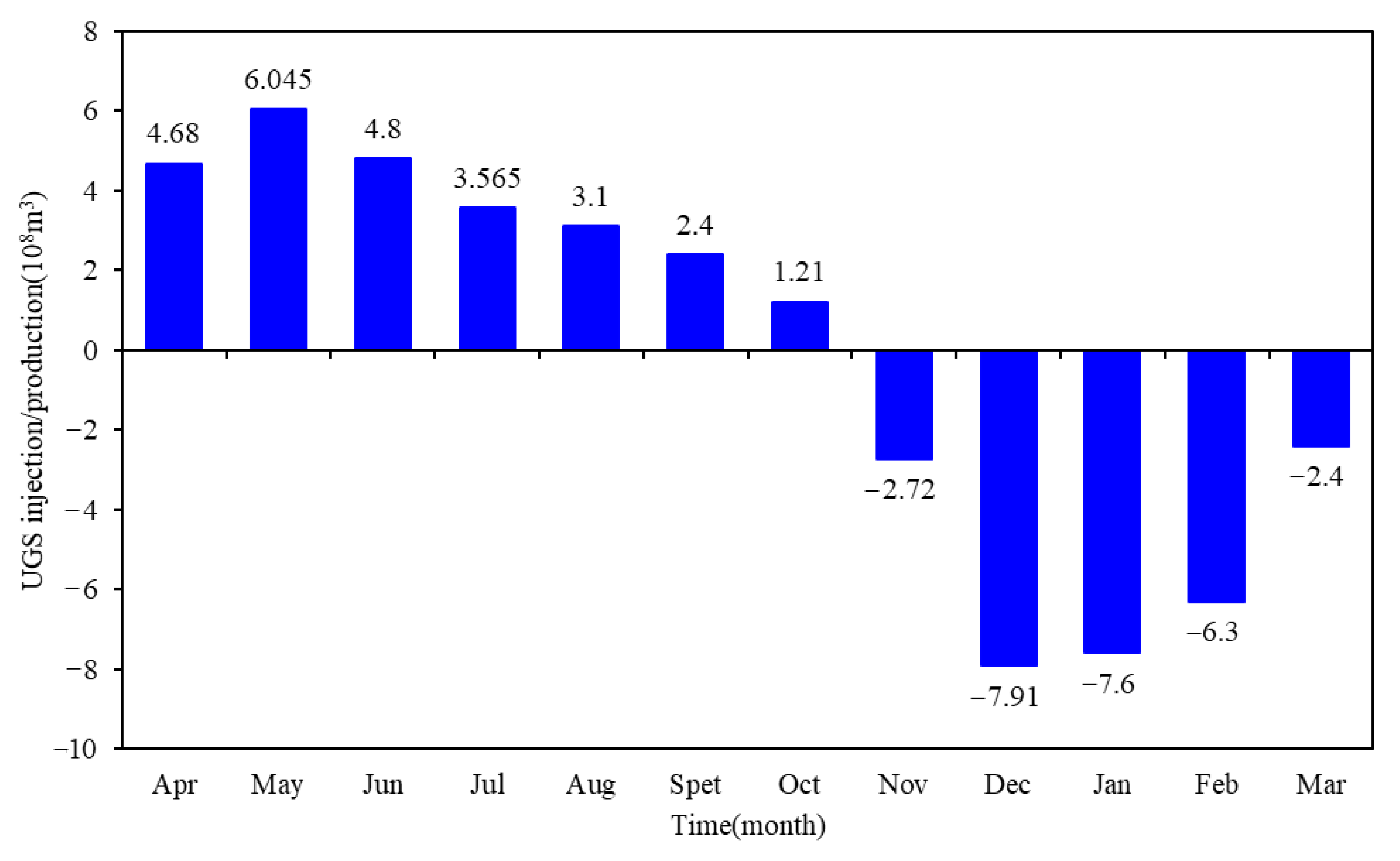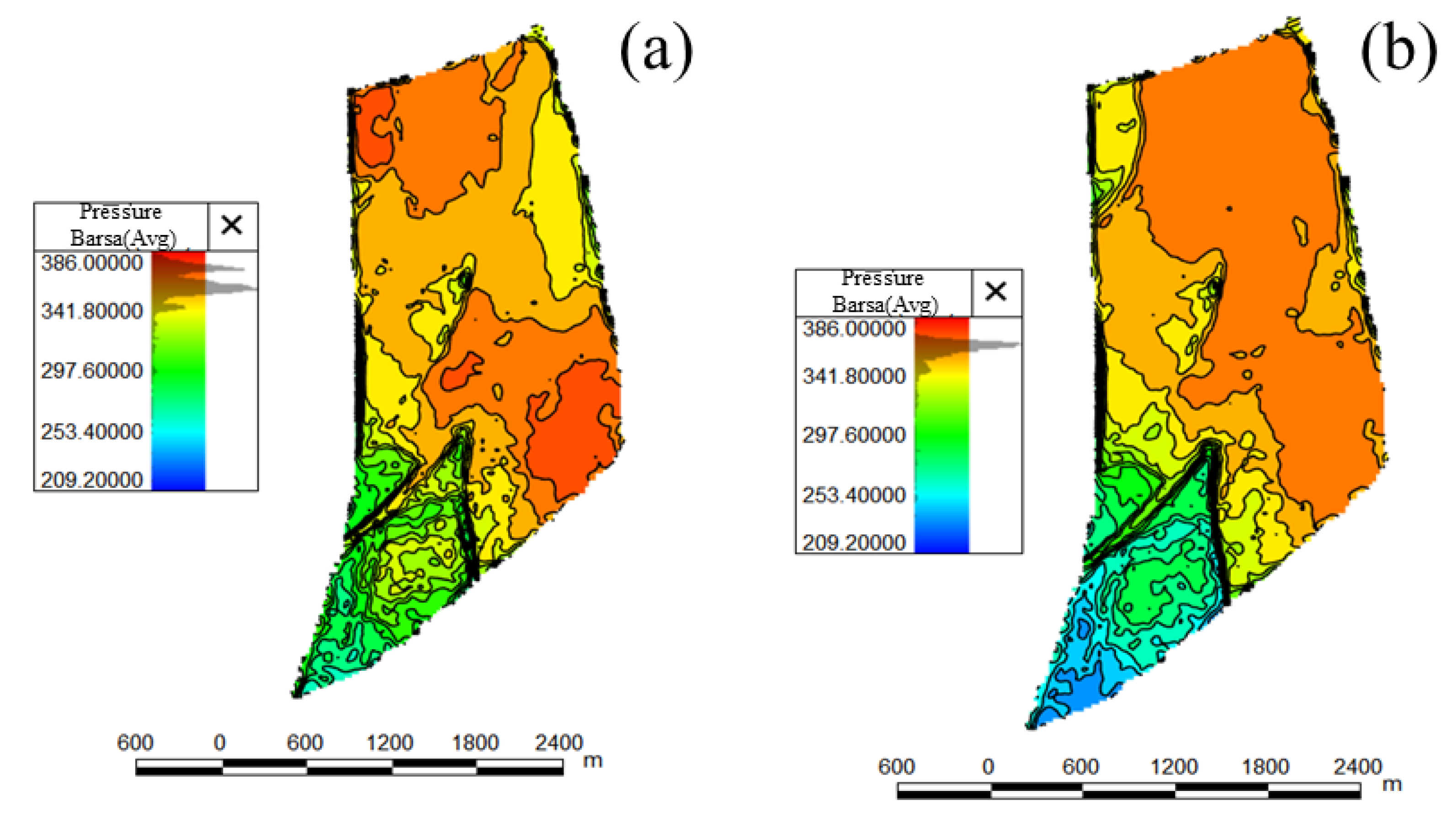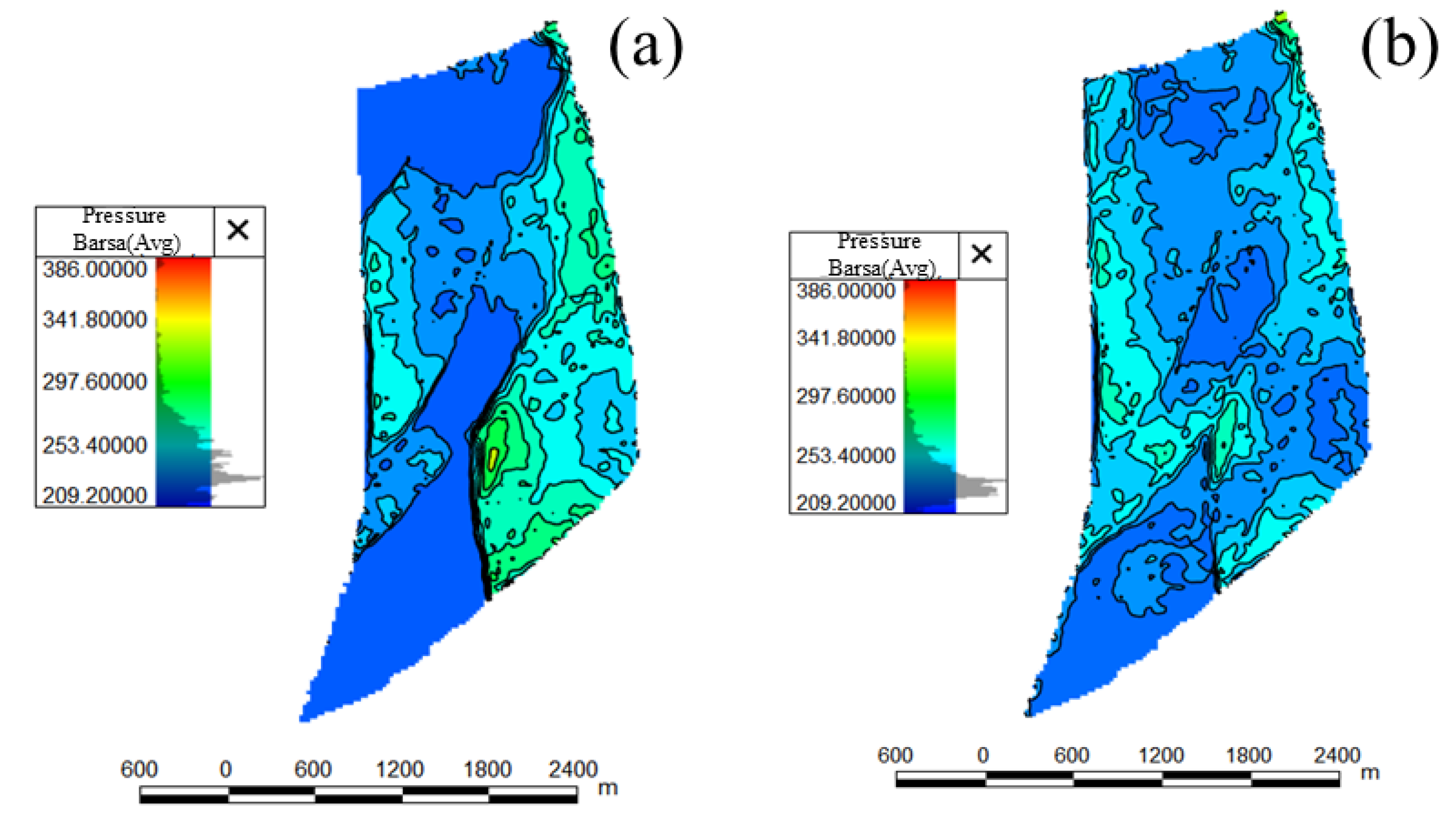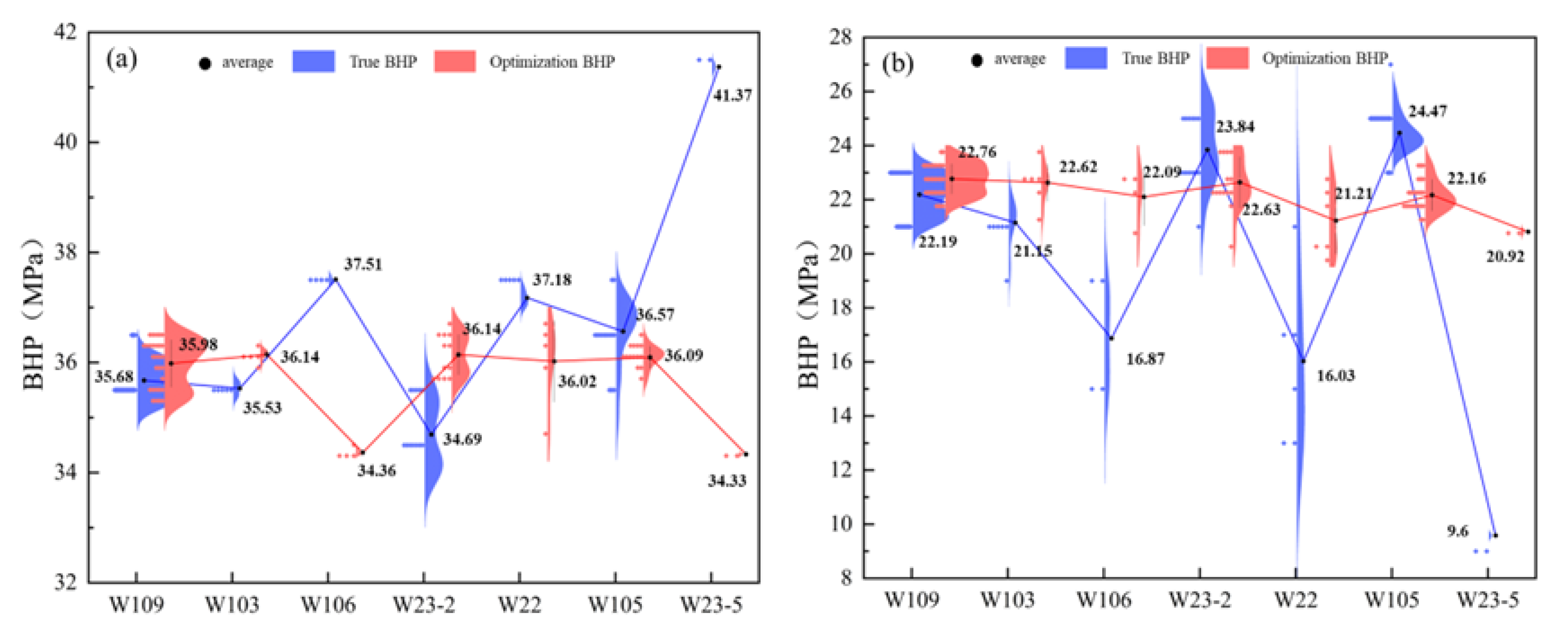1. Introduction
Natural gas, recognized for its environmental advantages, economic efficiency, and high energy density, plays a pivotal role in both residential and industrial applications [
1]. However, fluctuations in the supply and demand of natural gas, propelled by factors like climate variations, industrial expansion, and evolving consumption patterns, pose challenges to the traditional methods of gas gathering and transportation. These traditional methods are becoming increasingly insufficient in guaranteeing a balanced supply [
2].
Conventional peak load regulation measures for natural gas encompass underground gas storage (UGS), liquefied natural gas (LNG) receiving stations, and gas field adjustment [
3,
4]. The LNG receiving station adjustment has weak risk resistance. External factors like inconsistent supply sources, fluctuating transportation costs due to oil prices and tariffs, and adverse weather disrupt operations. Gas field adjustment mainly uses super intensive extraction and increasing pressure difference. Both can cause severe damage, such as rapid reserve depletion and land subsidence, threatening long-term gas field operation. In contrast to other load regulating techniques, UGS boasts several remarkable merits. It can store large volumes of gas, has a wide regulatory scope for various demand changes, and incurs low operating costs [
5,
6]. UGS not only solves seasonal demand imbalance by storing and releasing gas as needed, but also has strategic significance in enhancing energy security and reducing import dependence [
7].
UGS using depleted gas reservoirs is crucial for managing seasonal gas demand variations [
8]. These reservoirs, often repurposed due to their infrastructure and containment capabilities, serve as strategic reserves for peak shaving and emergency supply [
9]. The optimization of gas storage operations has become a key area of research and industry interest.
In recent years, efforts to improve injection and production efficiency in gas storage have shifted from empirical methods and simplified models to mathematical modeling and numerical simulations [
10]. These methods better address the complexities of large-scale UGS systems, offering more accurate optimization strategies for injection and withdrawal processes. Numerical simulations enhance our understanding of reservoir dynamics, aiding in resource recovery and long-term planning [
11].
A conventional methodology for optimizing injection–production schemes involves the utilization of numerical simulation to develop reservoir models. Bagci et al. (2007) [
12] employed a black oil model to simulate and evaluate the feasibility of new horizontal wells designated as injection–production wells in depleted gas reservoirs intended for storage purposes. Turryen et al. (2000) [
13] utilized material balance diagram and productivity equation to simulate the performance of gas storage, including a good layout, the number of horizontal wells, lateral length, and completion skin, while investigating their effects on gas storage operations. B. Moradi et al. (2009) [
14] simulated the impact of injection–production cycles on rock properties and condensate, demonstrating that an increase in cycles leads to a reduction in condensate within the near-well area, thereby enhancing gas-phase permeability. Subbiah et al. (2008) [
15] developed a geodynamics model to assess geological structures, formation pressure, rock strength, and sand stability, ultimately recommending completion strategies to ensure stable injection–production operations. Ponomareva et al. (2022) [
16] conducted a multidimensional analysis of actual reservoir data to integrate operational, geological, and reservoir characteristics into a predictive model for formation pressure.
Numerical simulation facilitates the accurate modeling of reservoir flow and the optimization of production processes. However, traditional simulation software frequently encounters low optimization efficiency due to the multitude of influencing factors and inherent complexity. With the rapid advancements in mathematical modeling and machine learning, an increasing number of researchers are employing these methodologies to enhance the optimization of gas storage injection and production [
17]. Evolutionary algorithms, such as the genetic algorithm (GA) [
18], particle swarm optimization (PSO) [
19], artificial bee colony (ABC) [
20], differential evolution (DE) [
21], and simulated annealing (SA) [
22], offer effective methods for parameter optimization.
Wu et al. (2020) [
23] proposed the utilization of neural networks as an alternative to numerical simulations for predicting the distribution of remaining oil. This approach was integrated with a gradient-free differential evolution algorithm to optimize injection and production parameters, employing net present values (NPVs) as the objective function. Fadilah et al. (2019) [
24] implemented a Gbest-guided artificial bee colony algorithm to model the relationship between injection and production to maximize the mathematical model. Farahi et al. (2022) [
25] employed an adapted multi-objective particle swarm optimization (MOPSO) algorithm to achieve a balance between long-term and short-term net present values (LNPVs and SNPVs) along the Pareto front, facilitating optimized decision-making. Azamipour et al. (2018) [
26] utilized a combination of genetic algorithms (GAs) and multi-body search techniques to maximize the NPVs, thereby optimizing production rates and water injection to enhance reservoir recovery.
Compared to genetic algorithms, PSO has a unique feature: the particles retain memory. In PSO, information is shared only by the globally best particle, unlike genetic algorithms where chromosomes exchange information among themselves. This results in less information exchange in PSO, with updates focused solely on the global optimal solution [
27]. PSO’s operational rules are simpler, often leading to faster convergence to the optimal solution. Additionally, it is easy to implement, requires fewer parameters, and has a quick convergence rate, making it effective for complex optimization tasks in petroleum engineering [
28]. However, the update position constraints of the particles are less and degradation problems may occur, so the SA algorithm is introduced to enhance the quality of the position update and the enhanced algorithm obtains a stronger global search capability after combining the SA algorithm with the PSO algorithm.
Therefore, this study proposes an injection–production optimization model based on SA-PSO to enhance the operational scheme of large, depleted gas storage facilities. Initially, a comprehensive analysis of the geological characteristics and reservoir properties of the W23 gas storage facility is presented. Utilizing measured data and numerical simulations, a high-precision three-dimensional geological model and a corresponding numerical simulation model have been developed, establishing a robust foundation for the subsequent optimization scheme. Subsequently, this paper addresses the limitations of existing injection and production schemes by validating the model’s reliability through historical matching. Large, depleted gas storage facilities typically consist of multiple injection–production blocks. During the production process, the formation pressures of each block vary differently with the changes in the injected and produced gas volumes, making it extremely easy to form formation pressure differences between blocks [
29]. Excessively high formation pressure differences between blocks may lead to the damage of fault sealing, resulting in gas channeling or leakage accidents [
30]. To ensure the long-term safe and stable operation of the gas storage facility, this paper applies the SA-PSO algorithm to optimize the injection and production volumes in the sixth injection–production cycle. The objective is to minimize the pressure differences between blocks, and the injection and production volumes of each block are redistributed. Finally, a comparative analysis with conventional injection–production schemes illustrates the advantages of the optimized approach in practical applications, demonstrating its effectiveness in enhancing working gas volume and balancing pressure differentials between blocks. In conclusion, this study not only introduces a novel methodology for the injection–production optimization of large, depleted gas storage reservoirs but also serves as a valuable reference for future research in this domain.
3. Case Study
To assess the efficacy of the optimization model and methodology in addressing injection–production optimization for extensive, depleted gas storage reservoirs, the W23 gas storage reservoir was selected as a case study. This reservoir is in the northern region of the Wenliu structural high, within the central uplift zone of the Dongpu sag. The overall geological structure is characterized by a complex anticline that has developed against a backdrop of basement uplift, which is segmented by regional level III and IV faults into four distinct blocks: the main block (W23), the east block, the west block, and the south block. According to the distribution of faults, the W23-UGS is further divided into seven blocks on the horizontal plane, namely W103, W109, W23-2, W105, W106, W22, and W23-5, as depicted in
Figure 2a.
Based on the evaluation of fault sealing, the main faults of the W23-UGS are classified into three categories, namely I-Class faults to III-Class faults. I-Class faults have the strongest sealing ability and are regarded as strongly sealed faults. The connectivity between the blocks on both sides of these faults is extremely poor. During the injection and production processes, there is no mutual influence, and the formation pressure difference across the fault is greater than 10 MPa. II-Class faults come next, being weakly sealed faults. The connectivity between the two side blocks is relatively poor, with minor pressure interference, and the pressure difference across the fault is less than 10 MPa. III-Class faults have the poorest sealing ability and are non-sealed faults. The connectivity between the blocks on both sides is relatively good, and the formation pressure difference across the fault is less than 5 MPa. I-Class and II-Class faults are used as the criteria for dividing each block, and the fault classification is shown in
Figure 2b.
The gas-bearing layer of W23 is located within the fourth member of the Shahejie Formation, which is part of the Lower Tertiary, at a burial depth ranging from 2750 to 3120 m. This member is further subdivided into eight distinct sand formations, exhibiting a total formation thickness of 300 to 500 m. The sand formations are characterized by significant thickness, stability, and favorable internal connectivity. The reservoir displays low porosity and low permeability, with porosity values ranging from 8.86% to 13.86% and permeability values between 0.27 and 17.12 millidarcies (mD). The methane content within the reservoir varies from 89.28% to 97.13%, while the condensate oil content is measured at 10 to 20 g per cubic meter (g/m3). The original formation pressure is recorded to range from 38.62 to 38.87 megapascals (MPa), and the original formation temperature is around 116 °C (PipeChina Zhongyuan gas storage co., ltd, Puyang City, Henan Province, China), indicating the presence of a sandstone gas reservoir with block-like characteristics. The caprock at the top of the Wen 23 gas reservoir mainly consists of grayish-white salt rocks and gypsum-salt beds deposited in the lower part of the third member of the Shahejie Formation, interbedded with gray and dark-gray mudstones. The gypsum-salt rocks in the Wen 23 area are characterized by a large thickness, wide distribution, and strong sealing ability.
The W23 gas storage reservoir was initially characterized by a formation pressure of 38.6 MPa and encompasses an area of approximately 8.15 km2. It is designed as a working gas volume with a total capacity of 10.365 × 108 m3, which includes a working gas volume of 40.02 × 108 m3. The project is structured into two distinct phases: Phase 1 is currently operational, while Phase 2 has been constructed but is not yet fully functional. Phase 1 is designed to accommodate a capacity of 84.31 × 108 m3 and a working gas volume of 32.67 × 108 m3, with operational pressures ranging from 20.92 to 38.6 MPa. The surface facilities are designed to support a maximum daily injection rate of 1800 × 104 m3/d and a maximum withdrawal rate of 3000 × 104 m3/d. Phase 2 contributes an additional capacity of 19.284 × 108 m3 and a working gas volume of 7.35 × 108 m3, with surface facilities capable of handling 600 × 104 m3/d for injection and 900 × 104 m3/d for withdrawal.
Phase 1 of the Wen-23 gas storage project comprises a total of 131 wells. This total includes 68 newly constructed wells, which consist of 58 injection-production wells, 3 gas-only production wells, 5 monitoring and observation wells, and 2 wells that are awaiting commissioning. Furthermore, there are 63 existing wells, which include 46 plugged wells, 6 monitoring wells located outside the block, and 11 repurposed wells situated within the block. In Phase 2, drilling has been completed for 24 wells, all of which are currently awaiting production. The locations of the wells for each block are illustrated in
Figure 2a.
Before the implementation of injection–production optimization, it is essential to first establish a numerical simulation model to validate the subsequent optimization strategies. This study develops a three-dimensional geological model (Petrel 2016, Schlumberger Limited, Shenzhen, China) of the W23 gas storage reservoir, utilizing interpretations derived from core samples, well logs, seismic data, and other pertinent information. By employing this geological model and incorporating reservoir characteristics, flow mechanisms, and production data from 131 wells, a high-resolution numerical simulation model (tNavigator 22.4, Rock Flow Dynamics, Houston, TX, USA) of the W23 reservoir is constructed, as illustrated in
Figure 3.
History matching constitutes a vital component in the process of reservoir numerical simulation. Upon completion of the numerical model computation, it is essential to compare the actual field injection and production data with the simulated results. The numerical model can only be deemed reliable and accurately reflective of the true reservoir dynamics when the simulation closely corresponds with the actual field data. Consequently, adjustments to parameters are necessary during the history-matching process to attain a high level of accuracy, which will subsequently inform analysis and forecasting endeavors.
In the process of history matching, we conducted the matching by maintaining a constant surface gas production rate for the wells, utilizing key indicators such as bottom-hole pressure and wellhead pressure. This approach employs historical matching to assess the accuracy of the numerical model, with the pressure curves of representative injection and production wells serving as evaluation metrics. The results indicate that the model attained a high level of reservoir pressure matching (see
Figure 4), thereby confirming the reliability of this numerical model in predicting pressure distribution within a highly complex geological environment. This validation establishes a solid foundation for the subsequent optimization of injection and production processes.
As of March 2024, the W23 gas storage reservoir has completed five injection–production cycles, resulting in a cumulative gas injection of 122.34 × 108 m3 and a cumulative gas production of 64.89 × 108 m3, leading to a net gas injection of 63.2 × 108 m3. Following four years of operational activity, the reservoir has transitioned into a stable operational phase; however, the actual working gas volume has only reached 54.7% of its designed capacity. During the 2023–2024 cycle, the injection phase recorded a cumulative injection of 21.86 × 108 m3, which constitutes 54.65% of the designed working gas volume. The peak daily injection rate during this period was 1787 × 104 m3/d, representing 74.46% of the maximum designed daily injection rate. Conversely, the production phase resulted in a cumulative gas output of 21.18 × 108 m3, equivalent to 52.95% of the designed working volume, with a peak daily production rate of 3112 × 104 m3/d, amounting to 79.79% of the maximum designed daily injection rate.
In comparison to the design targets established for the reservoir, there exists potential for optimizing the working gas volume. The extensive faults in the W23 gas field have complicated the original injection–production plan. There are seven strongly sealed faults, three weakly sealed faults, and several non-sealed faults in the W23 gas field. The complex distribution of these faults poses challenges in maintaining the injection–production pressure balance across the entire fault block. Consequently, it is imperative to readjust the injection–production strategy during the stable production phase to enhance the working gas volume, equilibrate pressure differentials between the blocks, and ensure the efficient and stable operation of the gas storage reservoir.
Currently, the W23 gas storage reservoir is in the expansion phase, aiming to achieve its full production capacity. The inventory and storage capacity of each block at the conclusion of the fifth injection–production cycle are detailed in
Table 1. For Phase 1, the feasibility report established the maximum injection and production capacities for 58 injection wells and 61 production wells under varying formation pressure conditions. Utilizing actual injection–production data from individual wells, the projected maximum injection capacity for the current 58 injection wells is presented in
Table 2, while
Table 3 illustrates the maximum production capacity for the 61 production wells under different geological conditions. It is important to note that the Phase 2 wells are not yet fully operational, and the maximum injection–production capacity per well is estimated based on geological parameters.
The analysis of the gas injection capacity and varying formation pressures indicates that the actual gas injection capacity of the formation diminishes progressively during the later stages of gas injection, significantly falling below the levels observed during the initial injection phase. To speed up achieving optimal capacity, the strategy for the sixth cycle involves further increasing the formation pressure by injecting gas at the maximum injection capacity. It is anticipated that the maximum permissible gas injection volume for the Phase 1 project will reach 20.8 × 10
8 m
3, with an average formation pressure of 36.5 MPa after the injection period. For the Phase 2 project, the maximum permissible gas injection volume is projected to be 5 × 10
8 m
3, also with an average formation pressure of 36.5 MPa at the end of the injection. Based on the inventory and pressure variations observed throughout the five cycles, the current inventory equation for Phase 1 is as follows:
Based on the end-of-injection formation pressure of 36.5 MPa for this cycle, it is anticipated that gas production will reduce the formation pressure to 21.5 MPa, leading to an average decrease in information pressure of approximately 15 MPa. Utilizing the inventory equation, the cumulative gas production for Phase 1 is estimated to be 21.9 × 108 m3, while the maximum permissible gas production volume for the Phase 2 project is projected to reach 5 × 108 m3.
The monthly schedule for gas injection and production is depicted in
Figure 5. An initial rapid injection phase occurs during the early to mid stages, which is subsequently followed by a gradual decline in the injection rate during the later stages. This approach facilitates a steady increase in formation pressure. It is anticipated that the gas injection rate will attain its peak between May and June, with over 70% of the total cumulative injection volume projected to be completed by the end of July. In September and October, the injection volume is expected to decrease gradually in response to the rising formation pressure, thereby mitigating the risk of excessive pressure accumulation around the wells. Furthermore, monthly adjustments to the injection schedule will be implemented based on prevailing market gas supply conditions.
4. Result
Based on the established relationship between block pressure and inventory, the SA-PSO algorithm is utilized to optimize the gas injection and production volumes for each block during the sixth injection–production cycle to minimize pressure differentials between blocks. This optimization process determines the most effective distribution of total gas injection and production volumes across the various blocks. Following this, and using the injection–production plan while considering the injection and production capacities of individual wells, the gas injection and production volumes for each well within each block are allocated. This completes the design of the injection–production scheme for the sixth cycle. The optimized gas injection and production volumes for each block are presented in
Table 4.
To comprehensively illustrate the efficacy of the optimization model and the corresponding solution methodology, a comparative analysis is performed between the optimized injection–production scheme and the widely utilized empirical injection–production scheme within the field, following the acquisition of the optimized plan. The empirical scheme satisfies the total monthly gas injection and production requirements; however, it fails to consider the inter-block pressure differentials after injection. Instead, it allocates gas volumes exclusively based on the number of wells in each block and the capacity of individual wells.
The optimized scheme was simulated utilizing modeling software, and the results were compared with those obtained from the empirical scheme.
Figure 6 illustrates a comparison of the average formation pressure before and after optimization during the sixth injection–production cycle. The optimized scheme yields smaller variations in average formation pressure. In Phase 1 (
Figure 6a), the optimized end-of-injection formation pressure (35.88 MPa) is marginally lower than the pre-optimization pressure (36.23 MPa), whereas the optimized end-of-production formation pressure (24.08 MPa) exceeds the pre-optimization pressure (23.68 MPa). Similarly, in Phase 2 (
Figure 6b), the optimized end-of-injection formation pressure (34.31 MPa) is lower than the pre-optimization pressure (35.07 MPa), and the optimized end-of-production formation pressure (23.96 MPa) is greater than the pre-optimization pressure (22.75 MPa). These findings suggest that the optimized scheme has the potential to further enhance the working gas volume.
Utilizing the optimized scheme as input, the formation pressure distribution derived from this scheme was calculated and subsequently compared with the simulation results of the original scheme. The comparative analysis of the numerical models is illustrated in
Figure 7 and
Figure 8. As depicted in
Figure 7, after the injection period, the optimized model demonstrates lower pressure readings in blocks W106, W23-5, and W22. With an equivalent total gas injection volume, the optimized scheme exhibits a more uniform pressure variation and reduced pressure differentials between the blocks.
Figure 8 further indicates that at the end of the production period, the optimized model similarly reveals lower pressures in blocks W106, W23-5, and W22. Under the same total gas injection volume, the optimized scheme yields more gradual pressure changes and diminished inter-block pressure differences.
Figure 9 presents a comparative analysis of bottom-hole pressures for individual wells within each block after the injection phase during the sixth cycle, both before and after optimization. The red curve represents the pressure of the optimized model, while the bar chart illustrates the actual pressure recorded before optimization. Following the implementation of the optimized injection–production scheme, the distribution of bottom-hole pressures at the end of the injection phase demonstrates a more uniform profile in contrast to the pre-optimization condition. This modification effectively achieves the overall injection objectives without exceeding the formation pressure limits in any of the blocks.
Figure 10 provides a comparative analysis of bottom-hole pressures across each block following production for the sixth cycle, both before and after the optimization process. The data demonstrate that the optimized scheme results in higher bottom-hole pressures after production when compared to the pre-optimization scenario. Additionally, due to the constraints imposed by the optimization model, regional pressures are sustained above the predetermined minimum threshold.
Figure 11 provides a comparative analysis of the average pressure in each block before and after the optimization process after the injection (
Figure 11a) and production (
Figure 11b) phases during the sixth injection–production cycle. The data are illustrated with blue representing pre-optimization pressures and red indicating post-optimization pressures. In
Figure 11a, it is evident that before optimization, the pressure at the end of the injection phase for Well Block W106 was recorded at 37.51 MPa, W22 at 37.18 MPa, and W23-5 at 41.37 MPa, with several blocks exceeding the formation pressure threshold of 38.6 MPa. The variance in formation pressures across the blocks was calculated to be 4.985 MPa
2. Following the implementation of the optimized injection–production strategy, the pressures at the end of the injection phase decreased to 34.36 MPa in W106, 36.02 MPa in W22, and 34.33 MPa in W23-5, resulting in a reduced variance of 0.618 MPa
2, which represents one-eighth of the initial variance. In
Figure 11b, the data indicate that prior to optimization, the pressures at the end of the production phase for Well Block W106 had declined to 16.87 MPa, W22 to 16.03 MPa, and W23-5 to 9.60 MPa, with certain blocks falling below the minimum formation pressure of 20.92 MPa. The variance of formation pressures across the blocks was determined to be 41.343 MPa
2. Post-optimization, the end-of-production pressures increased to 22.09 MPa in W106, 21.21 MPa in W22, and 20.92 MPa in W23-5, thereby reducing the pressure variance across the blocks to 4.232 MPa
2, which is one-tenth of the original variance.
